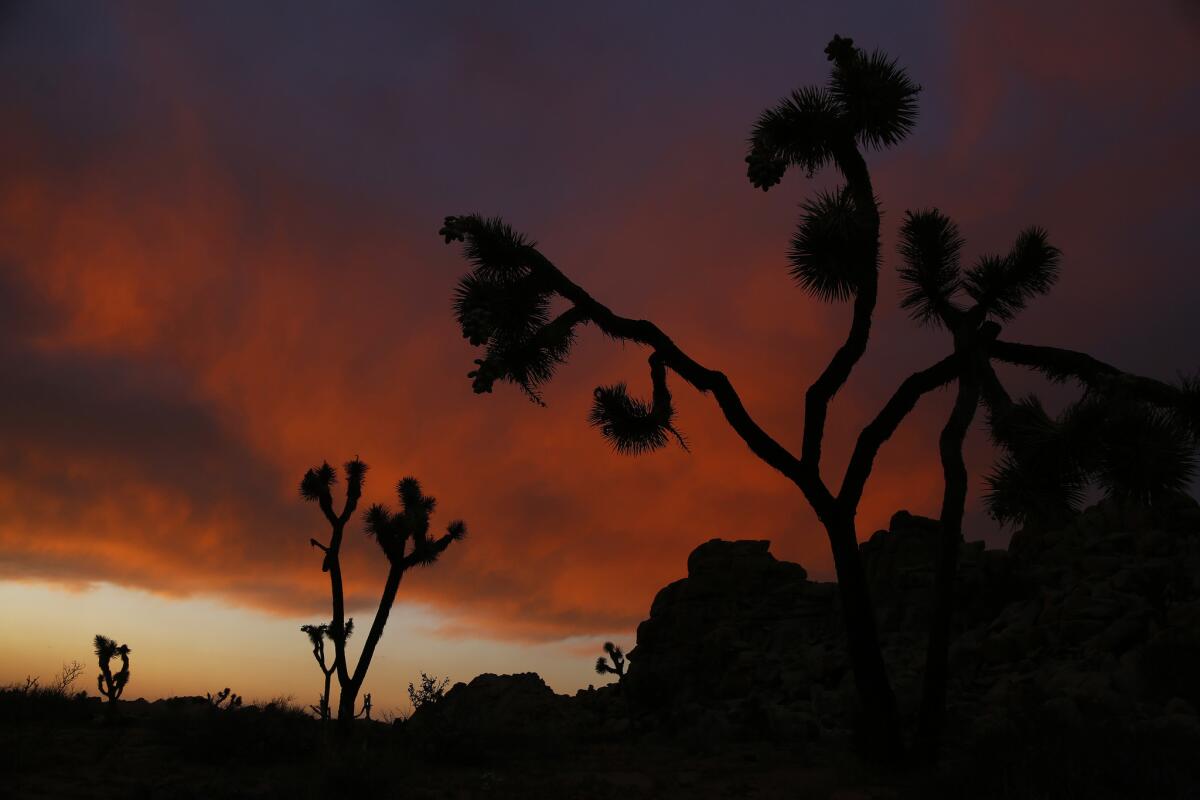Climate change will devastate California’s Joshua trees. The state needs to protect them

- Share via
Scientists have repeatedly warned that climate change, development and other environmental stressors are so dangerous to the survival of California’s Joshua trees that one of the main iterations of the plant could be nearly wiped out by the end of the century. It’s possible that Joshua Tree National Park could eventually have no Joshua trees.
Given that dire future, of course California should do everything it can to prevent lasting harm to one of the state’s most iconic and unique trees.
On Thursday, the state Fish and Game Commission will decide whether the western Joshua tree should be a candidate for listing as “threatened” under the California Endangered Species Act. If the commission votes yes, that will begin a yearlong review before a final decision is made. In the meantime, the western Joshua tree would be given many of the same protections as species that are formally listed as threatened or endangered.
But the proposal is facing strong opposition from clean energy groups, which argue the added protections would make it harder to build more large-scale solar and wind farms in the desert. That would hinder the transition to 100% renewable energy, which is vital for slowing climate change and protecting vulnerable species — like Joshua trees.
This isn’t the first time renewable energy companies and environmental preservationists have clashed. There’s been an ongoing tug-of-war over how much of California’s desert should be available for energy development and how much should be set aside for ecological protection.
That tension is all the more reason to list the western Joshua tree as a threatened species, which would require the state to create a plan to preserve it. The plan wouldn’t necessarily stop development completely, but it would force scrutiny of projects that could damage the trees or diminish their habitat. In fact, the desert tortoise has been listed as threatened for 30 years, and the protections haven’t caused development to grind to a halt. The region could also create a conservation plan that could steer development — particularly renewable energy projects — toward less sensitive areas while encouraging preservation of the most valuable habitat.
Opponents argue that listing isn’t necessary because there are still a lot of Joshua trees in the desert and they aren’t in immediate danger of extinction. That was also the reason the Trump administration rejected listing the tree under the federal Endangered Species Act last year.
But that argument ignores the effects of climate change and the unique characteristics of the Joshua tree, which propagate only by seeds, grow less than three inches a year and take half a century to mature. Western Joshua trees at lower elevations are already failing to reproduce because of the warmer temperatures and lack of moisture. (The eastern Joshua tree’s future is also uncertain, but it is not included in the petition for listing.)
California can’t afford to wait until Joshua trees are on the verge of extinction to try and save them. If the state acts now, communities will have more options and flexibility to help Joshua trees keep their place in California’s desert.
More to Read
A cure for the common opinion
Get thought-provoking perspectives with our weekly newsletter.
You may occasionally receive promotional content from the Los Angeles Times.









